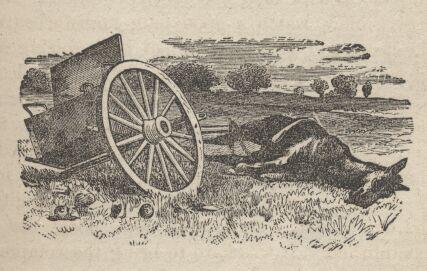Located on US 50 65 miles west of Austin. An interpretive center near the highway explains the history of the site and marks the beginning of a 1-1/2-mile trail to the station. In March of 1860, the station was built by Superintendent Bolivar Roberts, J.G. Kelly and others. It was put to use by the Pony Express in early April. Jim McNaughton was the station keeper at Cold Springs until he became a rider. J. G. Kelly was assistant station keeper at Cold Springs for a while.
The 1860 structure was built of large native rocks and mud. It was a large station, measuring 116′ x 51′. The walls were 4-6′ high and up to 3′thick. There were 4 distinct rooms — storage area, barn, corral, and living quarters.
The horse corral was located next to the living quarters primarily as a safety measure to guard the valuable animals. This location also took full advantage of the animals’ body heat during cold Nevada winters. The only other source of heat was from one small fireplace.
Station keepers and riders were continually changing. Another rider that stayed at Cold Springs was William James. He rode in 1861 between Simpson Park and Cold Springs. Today at Cold Springs a substantial fortress still stands out on the trail. Living quarters and corral are easily recognized as well as windows, gun holes, and a fireplace. The “rivulet of good water from the neighboring hills, that Burton found so refreshing is still running by the old ruins. (Expedition Utah)
COLD SPRINGS/EAST GATE STATION:
Sources generally agree on the identity of Cold Springs as a station, and Raymond and Mary Settle give Cold Springs the status of a home station.
Bolivar Roberts, J. G. Kelly, and their crew erected Cold Springs Station in March 1860 for the C.O.C. & P.P. Express Co. as they prepared for the beginning of the Pony Express the next month. Several men managed station operations at Cold Springs, including Jim McNaughton, John Williams, and J. G. Kelly. In May 1860, Indians attacked the station, killed the stationkeeper, and took the horses. They raided the station again a few weeks later. When Richard Burton reached Cold Springs on October 15, 1860, he found a roofless, partially built station house. Townley notes that the Overland Mail Company line dropped Cold Springs from its route about July 1861 in favor of a site west of present U. S. 50.
Much of the station's stone ruins still exist today. Thick walls, complete with windows, gunholes, and a fireplace, identify the station, and the remains of a corral stand nearby. As in Burton's visit in 1860, the structure has no roof. ] (NPS)
Note: The ruins described sound like the features seen just west of the Rock Creek Station, just to the south of the Cold Springs Station, as seen from the Google Earth tour.
To Cold Springs, 15th October.
After a warmer night than usual - thanks to fire and lodging - we awoke and found a genial south wind blowing. Our road lay through the kanyon, whose floor was flush with the plain; the bed of the mountain stream was the initiative of vile traveling, which, without our suspecting it, was to last till the end of the journey. The strain upon the vehicle came near to smashing it, and the prudent Kennedy, with the view of sparing his best animals, gave us his worst, two aged brutes, one of which, in consequence of her squealing habits, had won for herself the title of "ole Hellion." The divortia aquarum was a fine watershed to the westward, and the road was in V shape, whereas before it had oscillated between U and WW. As we progressed, however, the valleys became more and more desert, the sage more stunted, and the hills more brown and barren. After a midday halt, rendered compulsory by the old white mare, we resumed our way along the valley southward, over a mixture of pitch hole and boulder, which forbids me to forget that day's journey. At last, after much sticking and kicking on the part of the cattle, and the mental refreshment of abundant bad language, self-adhibited by the men, we made Cold Springs Station, which by means of a cut across the hills could be brought within eight miles of Smith's Creek.
The station was a wretched place half built and wholly unroofed; the four boys, an exceedingly rough set, ate standing, and neither paper nor pencil was known among them. Our animals, however, found good water in a rivulet from the neighboring hills and the promise of a plentiful feed on the morrow, while the humans, observing that a beef had been freshly killed, supped upon an excellent steak. The warm wind was a pleasant contrast to the usual frost, but as it came from the south, all the weather-wise predicted that rain would result. We slept however, without such accident, under the haystack, and heard the loud howling of the wolves, which are said to be larger on these hills than elsewhere.
(The City of the Saints, p 487-8)
